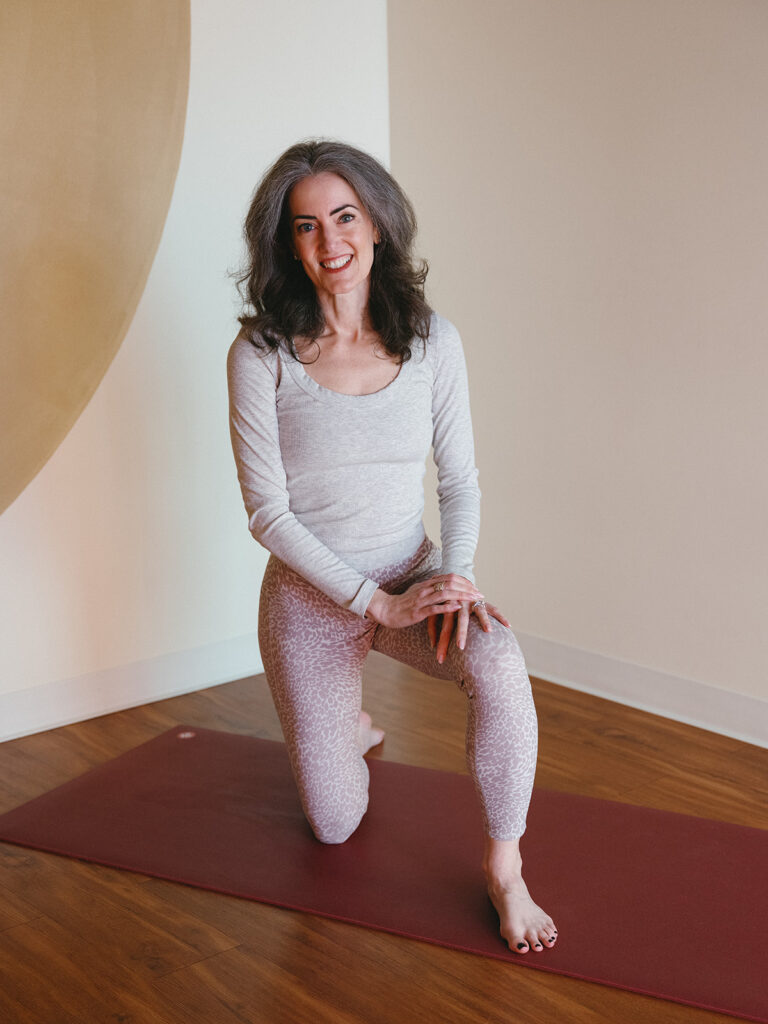When most of us first fall in love with yoga, it’s because of what happens on the mat. We discover an inward journey that grounds us, strengthens us, or offers us a way through life’s transitions. Naturally, when we decide to teach, we assume it’s more of the same: we simply share our practice with others.
But here’s the hard truth many new teachers miss: teaching yoga isn’t the same as practicing yoga. The two look similar on the surface, but they call on completely different skills. Practicing is about turning inward. Teaching requires turning fully outward. And until you make this mindset shift, you’ll stay stuck in the cycle of overthinking, self-doubt, and exhaustion.
Why Teachers Get Stuck in Practice Mode
It makes sense that teachers confuse practicing with teaching. Most 200-hour trainings are designed to deepen your personal practice. You spend weeks refining your alignment, memorizing set sequences to practice, and studying philosophy for your own understanding. You practice teaching on other trainees who already know the poses.
So when you step into your first real class, you’re still in “practice mode.” You’re watching your own breath, scanning your students’ expressions for validation, and asking yourself, Am I good enough? Do they like me?
That’s the exact moment the teaching mindset is missing. While you’re focused inward, your students are on their own journeys, needing clarity, direction, and presence from you.
The Shift: From Practitioner to Teacher
The turning point comes when you realize that your practice is what qualifies you to teach, but your teaching is not your practice. Teaching is an act of service. It’s not about how you feel at the front of the room—it’s about what your students need in that moment.
When you flip the question from How do I feel? to What do they need?, everything changes:
- Your sequence planning stops being about what excites you and becomes about what supports your students’ bodies today.
- Your cueing shifts from proving what you know to offering simple, clear direction.
- Your energy stops depending on being in the perfect mood and starts flowing from the intention to serve.
- Your confidence grows—not from collecting certifications or advanced poses—but from watching your students thrive.
This shift is counterintuitive. We expect confidence to come from knowing more or doing more. In reality, confidence comes from being useful.
Practical Ways to Make the Shift
So how do you step out of practice mode and into service mode? Here are four strategies you can try in your very next class:
1. Change Your Pre-Class Ritual
Instead of centering yourself on the mat, spend those minutes connecting with students. Learn a new name. Ask about someone’s week. Notice who looks nervous. You’re priming your brain to focus outward.
2. Simplify Your Sequencing
You don’t need to reinvent the wheel every week. Use a reliable framework like the 6-4-2 method to create balanced classes quickly. Repetition is not boring—it’s what builds trust and progress for your students.
3. Practice the Pause
After you give a cue, stop talking. Look around. Watch how students interpret your words. This is the real conversation of teaching: you speak, then you listen with your eyes.
4. Redefine Success
Stop grading yourself on how you felt teaching. Instead, ask: Did someone look more peaceful at the end of class? Did a student find a modification that worked for them? That’s your real report card.
Why This Mindset Frees You
When you release the need to practice while teaching, you also release the pressure to be perfect. You no longer compare your teaching to your own practice or to other teachers’ abilities. Instead, you measure success by the transformation in your students.
That’s the secret to feeling confident and capable in the classroom: stop being the hero of the story and step into your true role—the guide.
Bringing It All Together
The mindset shift from inward to outward is simple, but it’s not easy. It takes repetition, intention, and support. But once you see the difference, you can’t unsee it. Teaching yoga stops being a performance and becomes what it was meant to be all along: an act of service.
If this resonates with you, I invite you to listen to Episode 53 of Yoga Teacher Confidential. I share my personal journey, more examples of common misconceptions, and the affirmations that have carried me through two decades of teaching. You’ll walk away with practical strategies to build confidence and teach from a place of true service.


